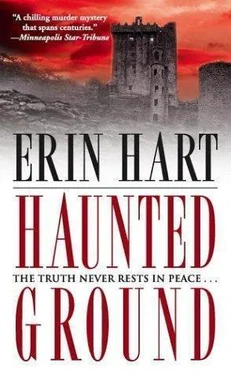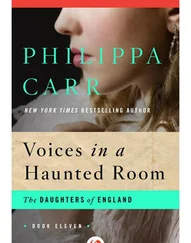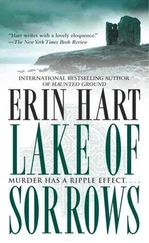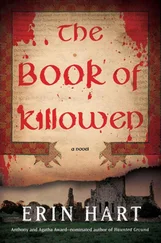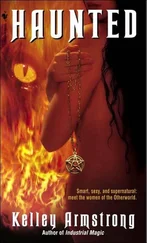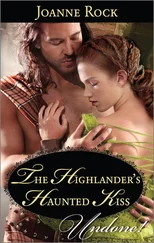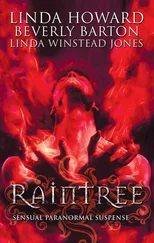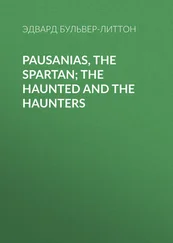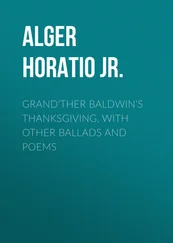Computerized Tomography: Extensive computerized tomographic images were made of the individual’s skull. No fractures are visible in the skull vault. The brain is not greatly shrunken and does not appear to be surrounded by air. The differentiation of gray and white matter can be identified within the dense brain stem extending into the spinal cord. As in the radiographs, there is a well-defined opacity of indeterminate origin, suggesting some sort of foreign body lodged in the individual’s mouth.
Report on the endoscopy performed by Dr. J. S. Mitchell, Department of Clinical Medicine, Trinity College, Dublin:
The interior of the mouth was very well preserved. The tissues were moist and much less stained than external tissues. They were brownish in color, and the membranes were not particularly fragile. The object appearing in previous radiographs and scans was present here also, but from its position against soft tissue, it was difficult to discern what exactly this object might be, or any details about its composition.
There was nothing in these reports that Nora didn’t already know. She closed the file and slowly circled the table, focusing on the awkwardly wrapped package and imagining the cold horror that waited there. Who are you? she asked silently. What happened to you? She reached out a hand and rested it on the twisted black polythene. Tell me. As soon as the thought flashed through her mind, Nora felt a sudden impulse to withdraw her hand, but couldn’t. She felt a pang of heartsickness as strong as any she had ever experienced, and stood with eyes closed, fixed to the spot until the sensation slowly dissipated. She opened her eyes and took her hand away.
Though she had been there dozens of times, the lab’s bright light and bare, polished surfaces seemed somehow foreign and strange. The others will be here any minute, she told herself. Get a grip. She took the X rays from a brown folder beneath the reports, put them up on the viewer, and switched on the light, studying the location of the “opacity” that they would try to extricate today.
Ray Flynn, the conservation technician, interrupted her thoughts, pushing through the door with his camera in hand. He was screwing on the flash attachment and checking to see that it was in working order. “Anxious to have at it, eh, Dr. Gavin?”
“Guilty.”
“You’re as bad as my kids at Christmastime.” Flynn pushed back through the door, nearly bumping into Niall Dawson. As assistant keeper of antiquities at the National Museum, Dawson was actually the person in charge of the operation today.
“Hello, Nora,” Dawson said, smiling. “We’ll be getting started any moment now, as soon as Fitzpatrick makes an entrance.”
“What do you think of the execution idea?” Nora asked.
“It’s a definite possibility. The electron microscopy shows damage to the vertebra consistent with use of a blade of some sort. Our problem is that we can’t tell definitively whether decapitation took place preor postmortem. We may have to be satisfied with what we have.”
“I know we can find out who she was,” Nora said. As soon as she spoke the words she felt foolish, as though she’d blurted out some secret. “I know it’s completely daft, but I do.”
“You’re wishing for something that may not happen. Promise you won’t be downhearted when it turns out to be nothing.”
“I’ll promise no such thing.”
Thirty minutes later, Barry Fitzpatrick, the plumpish, gray-haired dental lecturer from Trinity, was in the midst of his preliminary naked-eye assessment, speaking with the deliberate, measured tones of a teacher used to dictation: “The mandible appears to be only slightly dislocated due to postmortem events.” Grasping the crown of the red-haired girl’s head with one hand, he tried shifting the jawbone, first slightly from side to side, then up and down, with the other. “The jaw remains quite flexible. Because of the remarkable preservation of facial skin and muscle tissue, it will be necessary to open the mandible in order to gain access to the teeth. Mr. Flynn, if I could ask you to be ready with the camera as we open the mouth? Thank you.”
Fitzpatrick pulled gingerly at the lower jaw, eventually loosening the red-haired girl’s teeth from where they had bitten through her lower lip. He opened her mouth as wide as he could, peered inside, then reached in with a latex-gloved finger to check for missing teeth and molars.
“There appears to be full dentition present, the third molars being fully erupted. The teeth are brown in color, and there appears to be a complete absence of tooth enamel. Assessment of the individual’s age at death is difficult in this case, since enamel provides the most accurate indication of tooth wear. The first molars show slight to moderate wear of the dentine, while the third molars—if you could move the light just a little closer, please, Mr. Flynn—show little or no wear. Probable age at death was approximately twenty to twenty-five years. Now, Dr. Gavin,” said Fitzpatrick, looking up from his work and wrinkling his nose in an effort to keep his glasses from sliding down any more, “if you could give me an indication of where we should begin searching for this famous foreign body…”
“It appears to be fairly far back in the throat,” Nora said, pointing to the spot on the X-ray film, “and closer to the left side than the right.” Fitzpatrick glanced at the negative image, then bent to his task again, using his dental mirror as a tongue depressor.
“I want to avoid damaging the surrounding tissue if I can,” he said, “but it’ll be difficult not to push whatever it is even farther back, unless—Mr. Flynn, do you have a very large tweezers of some sort? That will do nicely, thank you.”
It was all Nora could do to keep from pressing next to Fitzpatrick so that she could see what he saw through the magnifying viewer.
“Come on,” he said, coaxing the thing forward, “this way out. Here it is.” Fitzpatrick lifted the object aloft, and four pairs of eyes beheld a band of finely worked gold, centered with a dark red stone. “I’d say it was a man’s ring, wouldn’t you, Dawson?” said Fitzpatrick, clearly delighted with his discovery. They all drew around to examine it more closely.
“Appears to be,” Dawson said. “And look inside. There’s some sort of inscription.” He struggled to make out the letters through the magnifying lens: “COF, then the number sixteen, letters IHS, another number, fifty-two. Then more letters, AOF.”
That’s it, Nora thought, the message she’d known was there. Had this girl tried to swallow the ring, or simply to hide it? What other explanation could there be? What thoughts must have raced through her mind in the last few seconds before she died? Nora looked back to the top of the table where the girl’s mouth was still propped open at an awkward angle under the glaring light. She felt suddenly ashamed. “Gentlemen,” she said, “if we’re finished, hadn’t we better cover her up again?”
The loom’s rhythmic sound usually had a calming effect on Una McGann’s mind, but tonight she felt slightly on edge. Brendan refused to have a television in the house, so each of them was engaged in some customary evening occupation: Fintan worked at the table, cutting new reeds for his pipes, making an occasional squawk as he blew through each thin piece of bamboo to test its sound. Aoife knelt on the floor beside him, enacting some story with an unlikely foursome that included a spotted salamander, a winged fairy, an elephant, and a giraffe. Brendan sat apart from them, on a stool near the fire, meticulously grinding a keen edge on one of his half-dozen sickles. Brendan kept a vast collection of old tools in the shed; some had belonged to their father and grandfather, while others came from neighbors who knew that he was interested and offered him their old implements when they ceased cutting turf or making hay by hand, as nearly everyone in the locality had done. His collection included spades and pitchforks, billhooks for cutting ditches, punch forks and hand rakes for thatching, foot sleans and breast sleans. Brendan kept each one shining, never letting the damp turn to rust on their blades.
Читать дальше
